
There’s a quiet, enduring strength to a landscape built with stone. It speaks of permanence, texture, and a thoughtful connection to the natural world. If you’re looking to redefine your home’s first impression, embracing rock landscaping ideas is one of the most impactful changes you can make. It’s about more than just swapping lawn for gravel; it’s a design choice that introduces sculptural beauty, striking contrast, and sophisticated, year-round interest. This guide will walk you through eight distinct approaches to elevate your property, creating a welcoming, polished, and wonderfully low-maintenance front yard. Let’s dig in and explore the possibilities.
Quick Tips for a Flawless Rock Landscape
Here are the foundational principles for success:
- Plan Your Layout: Before ordering a single stone, sketch your design. A meandering dry creek bed or a geometric pathway looks intentional and elegant.
- Install a Quality Weed Barrier: This is non-negotiable. A high-grade landscape fabric beneath your rocks will save you countless hours of weeding.
- Vary Rock Size and Texture: A dynamic landscape uses a mix of materials—large “anchor” boulders, mid-sized river rocks, and fine gravel—to create depth and visual interest.
- Choose Plants Wisely: Select drought-tolerant plants that thrive in well-drained conditions, such as succulents, ornamental grasses, and alpine natives.
8 Elegant Rock Landscaping Ideas for Standout Curb Appeal
Here are eight foundational concepts to inspire your front yard transformation.
1. The Meandering Dry Creek Bed
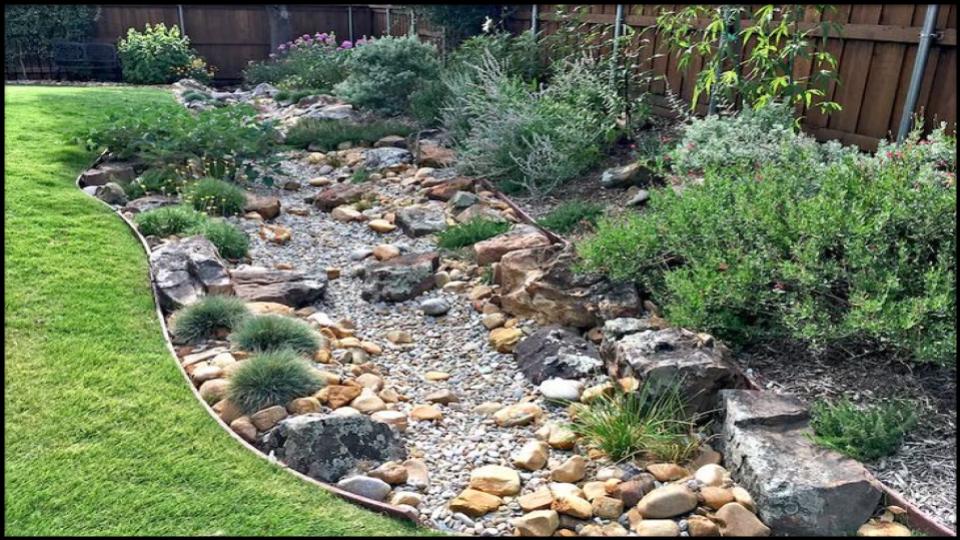
A dry creek bed is a masterful way to solve drainage problems while adding immense visual appeal. It mimics the natural path of water, guiding the eye through the landscape and creating a sense of movement.
To get this look, create a shallow, winding trench. Line it with landscape fabric, then fill it with a mix of river rocks and pebbles of various sizes. I always place the larger, smoother stones along the center and smaller pebbles along the edges to simulate how water would naturally deposit them. Flank the “banks” with graceful ornamental grasses like Blue Fescue or Japanese Forest Grass (Hakonechloa macra) to soften the edges. According to a guide from Washington State University Extension, a natural look is achieved by making the path wider on bends and narrower in straightaways.
2. The Modern Minimalist Approach
For a clean, contemporary aesthetic, embrace minimalism. This style of front yard landscaping with rocks focuses on strong geometric lines, a limited color palette, and the deliberate use of negative space.
Think large, flat-topped concrete or slate pavers creating a pathway, surrounded by a sea of uniform, dark-colored gravel like black basalt or polished river stones. A single, striking boulder or a trio of columnar cacti can serve as a living sculpture. I’ve found that the key to modern rock garden design is restraint; every element should feel intentional. The contrast between the smooth, hard surfaces of the pavers and the texture of the gravel is where the beauty lies.

3. The Tranquil Zen or Japanese-Inspired Garden
A Japanese garden is a space for contemplation and tranquility. It uses rocks, water (or the illusion of it), and carefully chosen plants to represent a miniaturized, idealized landscape.
Create this serene atmosphere with fine, light-colored gravel or sand, raked into patterns that symbolize waves or rippling water. The University of Illinois notes that using just one type of local stone creates the most natural and cohesive look. Place a few larger, moss-covered boulders to represent mountains or islands. Plantings should be minimal and meaningful—a sculpted Japanese maple (Acer palmatum), a cluster of black mondo grass (Ophiopogon planiscapus ‘Nigrescens’), and some soft moss are often all that’s needed.

4. The Dramatic Boulder Statement
Sometimes, one or two spectacular elements are all you need. Strategically placing large boulders (often weighing several hundred pounds or more) can create immediate drama and a powerful focal point.
I always advise clients to bury at least one-third of each boulder to make it look like it has been there forever, emerging naturally from the earth. Group them in odd numbers—threes or fives—for the most naturalistic arrangement. Use these giants to anchor a corner of your property, create a transition between elevations, or frame the entrance to a walkway. Surround them with low-growing, spreading groundcovers like Creeping Thyme or Sedum to soften their base.

5. The Polished Gravel Mulch Replacement
Move beyond wood mulch for a cleaner, more permanent solution. Replacing traditional organic mulch in your garden beds with a layer of gravel or pebbles offers a crisp, finished look and excellent weed suppression (when paired with landscape fabric).
Choose a rock color that complements your home’s exterior. Tan or warm-toned pea gravel pairs beautifully with brick homes, while cool gray or white marble chips can make a modern facade pop. A common mistake I see is using too thin a layer; aim for a depth of at least 2-3 inches to effectively block weeds and hold moisture in the soil below. This is a fantastic strategy for achieving a low-maintenance front yard.
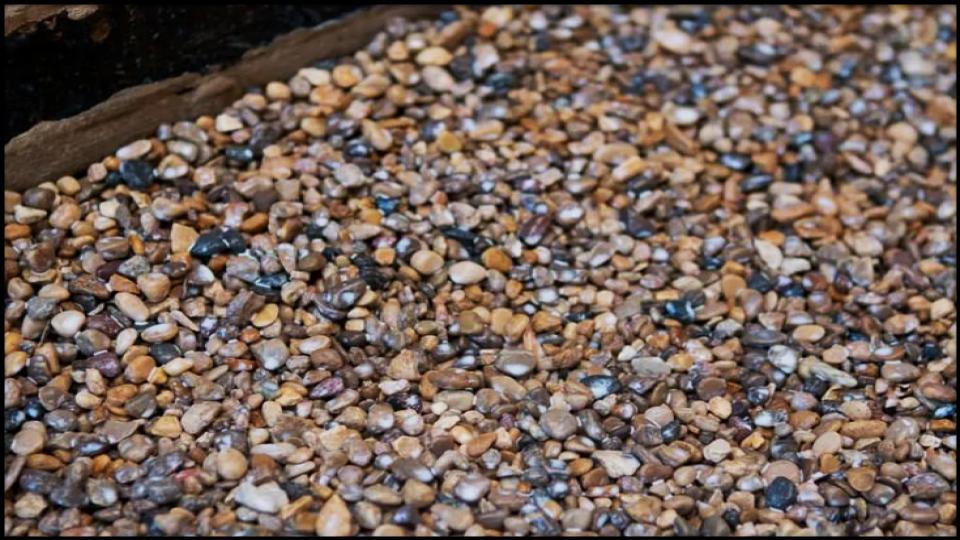
6. The Rustic Rockery or Alpine Garden
A rockery, or alpine garden, is designed to mimic a rocky mountainside scree slope. It’s perfect for sloped yards and for showcasing small, jewel-like plants that thrive in sharp drainage.
Build up a gentle slope or berm if your yard is flat. The key here, as highlighted by Colorado State University Extension, is excellent drainage. Use a mix of angular rocks and smaller scree (crushed stone) to create pockets for planting. This is the perfect home for alpine treasures like Rock Cress (Aubrieta), Hens and Chicks (Sempervivum), and Sea Thrift (Armeria maritima), which nestle beautifully into the crevices.
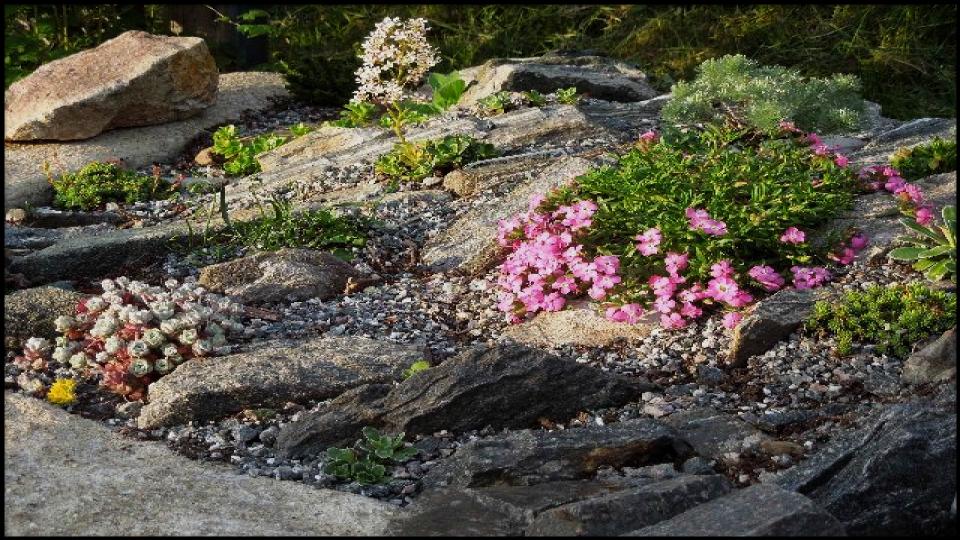
7. The Gabion Wall Feature
A gabion is a wire mesh cage filled with rocks, traditionally used in civil engineering but now a chic element in modern landscape design. Use them to build low retaining walls, property dividers, or even sculptural pillars.
The beauty of a gabion wall is its blend of industrial and natural aesthetics. You can fill the cages with any type of rock—smooth river stones for a polished look or rough, angular quarry stone for a more rustic feel. I love seeing them used to create raised planters; the wire frame contains the soil while the stone provides a rugged, textured facade.
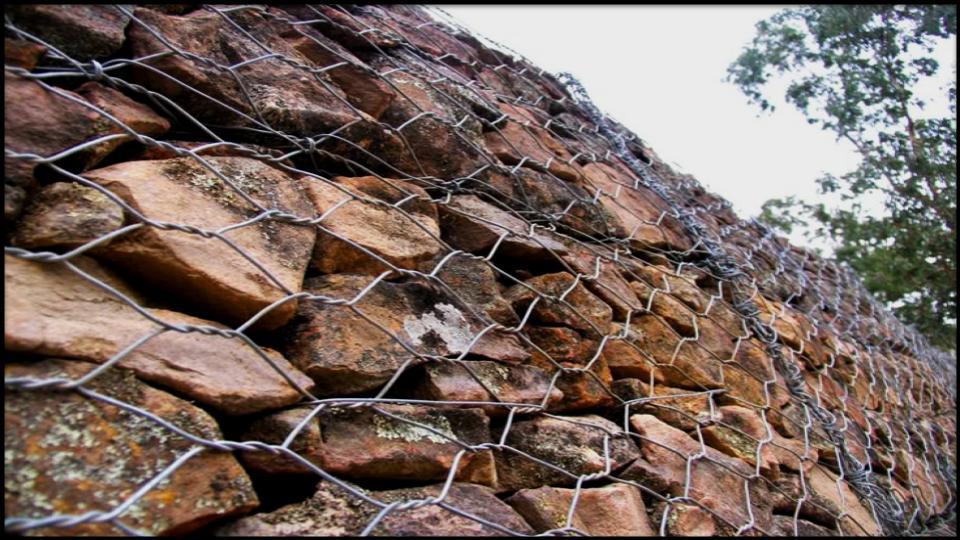
8. The Checkerboard Effect with Pavers
Combine the structure of hardscaping with the texture of rock for a sophisticated, graphic look. Create a checkerboard pattern by alternating large square pavers with sections of contrasting landscape rock.
This works wonderfully for patios, walkways, or as a full lawn replacement. For a high-contrast design, pair dark slate pavers with bright white marble chips. For a more subtle, organic feel, use flagstone pavers with earthy pea gravel. This design breaks up a large, monotonous area into a visually engaging pattern, adding a custom, high-end feel to your front yard landscaping with rocks.
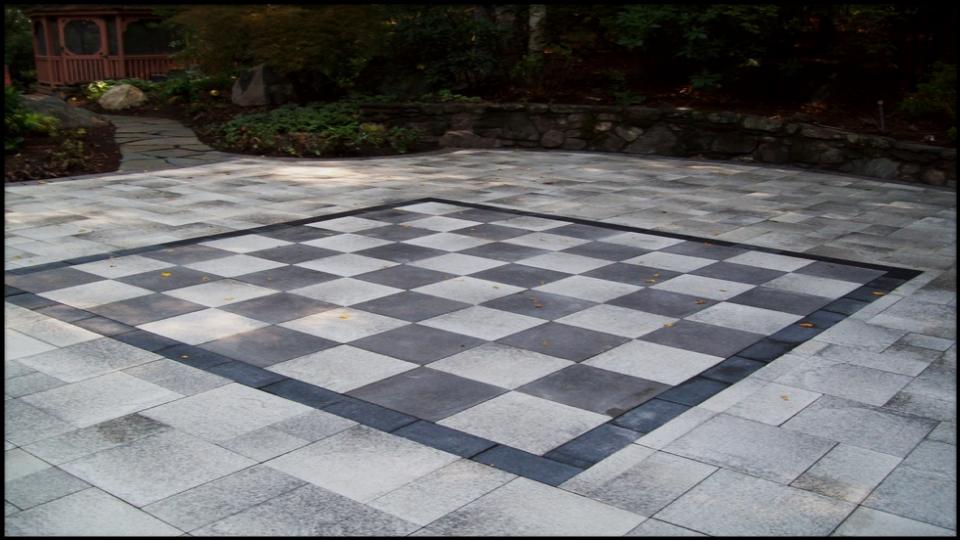
Choosing Your Palette: The Right Rocks and Plants
The success of your design hinges on selecting the right materials.
Rock Selection
- River Rocks & Pebbles: Smooth, rounded, and available in various sizes and colors. Perfect for dry creek beds and as a soft-textured groundcover.
- Crushed Gravel & Scree: Angular and locks together well, making it ideal for driveways and high-traffic paths. Comes in many rock types, from granite to basalt.
- Pea Gravel: Small, rounded stones that create a soft, crunchy sound underfoot. Best for low-traffic areas like patios and decorative beds.
- Boulders & Flagstone: The “bones” of the landscape. Boulders are large statement pieces, while flagstone is flat and ideal for creating naturalistic paths and patios.
TOOLS AND MATERIALS BOX:
- Hard Rake & Shovel: For grading and moving soil and rock.
- Wheelbarrow: Essential for transporting heavy materials like boulders and large bags of gravel.
- High-Quality Landscape Fabric: The thicker, the better for long-term weed prevention.
- Landscape Fabric Pins: To secure the fabric before adding rocks.
- Work Gloves & Safety Glasses: Protect yourself during installation.]
Perfect Plant Pairings
Rock landscapes require plants that can handle full sun and excellent drainage. Think tough, beautiful, and low-water.
- Ornamental Grasses: Blue Fescue (Festuca glauca), Little Bluestem (Schizachyrium scoparium), Pink Muhly Grass (Muhlenbergia capillaris). They add movement and texture.
- Succulents: Sedum (Stonecrop), Sempervivum (Hens and Chicks), and Yucca provide sculptural forms and incredible drought tolerance.
- Hardy Groundcovers: Creeping Thyme, Ice Plant (Delosperma), and Rock Cress (Aubrieta) will spill over rocks and soften hard edges.
- Flowering Perennials: Lavender, Russian Sage (Perovskia atriplicifolia), and Coneflower (Echinacea) add pops of color and attract pollinators.
An Enduring and Elegant Choice
By thoughtfully incorporating stone into your front yard, you are not just designing a garden—you are crafting a landscape. You’re choosing a path of less maintenance and more style, of enduring texture and year-round structure. The ideas here are a starting point, a foundation upon which you can build a landscape that is uniquely yours. Whether you’re drawn to the quiet minimalism of a Zen Garden or the rugged beauty of a boulder-strewn rockery, embracing these rock landscaping ideas will reward you with a stunning front yard that stands the test of time. Now you’re ready to create a truly remarkable first impression.
Read More
Propagate a Lemon Tree: Your Guide to a Lifetime of Homegrown Citrus
